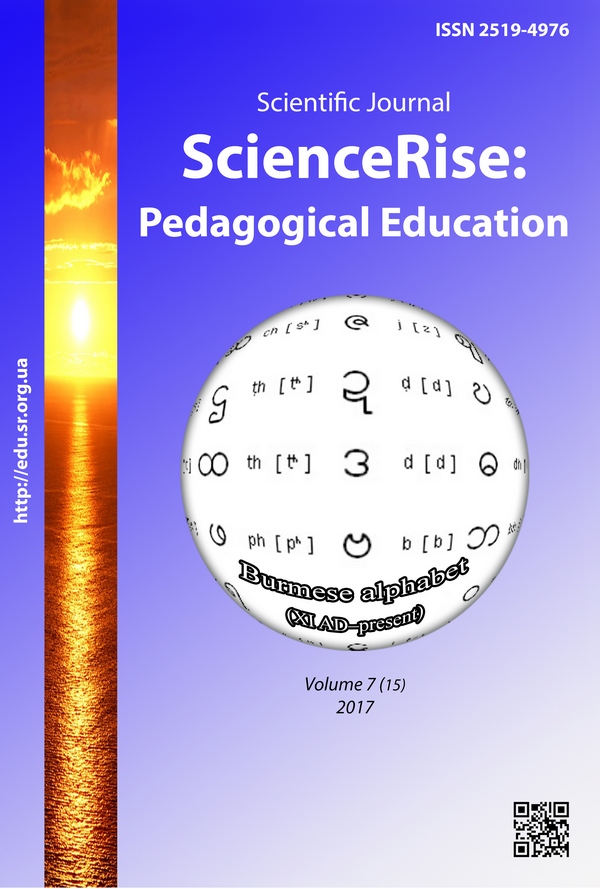Malaria vivax in Bukovyna: the clinical case of uncontrolled self-treatment
DOI:
https://doi.org/10.15587/2519-4798.2017.107918Keywords:
Plasmodium vivax, parasite-spreading, imported malaria, relapse, self-treatment, labor migrant, BukovynaAbstract
Materials and methods. There were used clinical, general laboratory, parasitological (microscopy of a smear and thick drop of blood), instrumental, epidemiological research methods. The descriptive analysis of the medical documentation (outpatient and stationary card of a patient) was realized, clinical-epidemiological data of a patient were analyzed.
Results of research and their discussion. At the admission of a patient of the infectious stationary of MCI “Regional clinical hospital of Chernyvtsi city” it was elucidated that he has been suffering from malaria attacks (ague-fever-perspiration) since 2013 after staying in Venezuela. He has the distinctly expressed positive epidemiological anamnesis, connected with a contract work. In the presented clinical case the patient was aware as to the malaria symptoms, because worked as a ship doctor. The uncontrolled self-treatment at the absence of the “gold standard” of laboratory diagnostics of malaria led to the long parasite-spreading in the liver tissue as “dormant forms”.
Conclusions.
1. At the positive epidemic anamnesis all cases of fever of unexplained genesis must be diagnosed for the most socially important tropic disease of 21 century in the world scale – malaria.
2. It is obligatory to establish the type of a malaria plasmodium by the repeated parasitoscopy of blood by the methods of thin smear, stained according to Gimza-Romanovsky and thick drop taking into account the predicted sensitivity to anti-malaria chemopreparations.
3. The attentive attitude of family doctors of the first link of family medicine to malaria allows to avoid complicated forms and remote relapses of this inoculable infection, caused by different types of plasmodia
References
- Trihlіb, V. I., Karіmov, І. Z., Kondratjuk, V. V., Pavlovska, M. O., Artemov, O. E., Homyakova, A.Yu. et. al. (2013). Analіz vazhkih vipadkіv tropіchnoi malyarіi. Semeyna medytsyna, 1 (1), 135–139. Available at: http://nbuv.gov.ua/UJRN/simmed_2013_1_29
- Sydorchuk, A. S. (2017). Zabuti protozoini tropichni invazii: stan ta perspectivy vakcinacii na suchasnomu etapi (ogliad literatury). Bukovynskii medychnyi visnyk, 21 (1 (81)), 221–223.
- Rizvi, I., Tripathi, D., Zaman, S., Zaidi, N., Chughtai, A., Beg, M. (2013). Complications associated with Plasmodium vivax malaria: A retrospective study from a tertiary care hospital based in western Uttar Pradesh, India. Annals of African Medicine, 12 (3), 155–159. doi: 10.4103/1596-3519.117624
- Mackey, T. K., Liang, B. A., Cuomo, R., Hafen, R., Brouwer, K. C., Lee, D. E. (2014). Emerging and Reemerging Neglected Tropical Diseases: a Review of Key Characteristics, Risk Factors, and the Policy and Innovation Environment. Clinical Microbiology Reviews, 27 (4), 949–979. doi: 10.1128/cmr.00045-14
- Price, R., Tjitra, E., Guerra, C., Yeung, S., White, N. (2007). Vivax malaria: neglected and not benign. The American Journal of Tropical Medicine and Hygiene, 77, 79–87.
- Antinori, S., Milazzo, L., Ridolfo, A. L., Galimberti, L., Corbellino, M. (2012). Severe Plasmodium vivax Malaria: Fact or Fiction? Clinical Infectious Diseases, 55 (11), 1581–1583. doi: 10.1093/cid/cis709
- Price, R. N., Douglas, N. M., Anstey, N. M. (2009). New developments in Plasmodium vivax malaria: severe disease and the rise of chloroquine resistance. Current Opinion in Infectious Diseases, 22 (5), 430–435. doi: 10.1097/qco.0b013e32832f14c1
- Gupta, N., Sahoo, S. K. (2013). Plasmodium vivax induced myocarditis: a rare case report. Indian Journal of Medical Microbiology, 31 (2), 180–181.
- Pinzon, M. A., Pineda, J. C., Rosso, F., Shinchi, M., Bonilla-Abadia, F. (2013). Plasmodium vivax cerebral malaria complicated with venous sinus thrombosis in Colombia. Asian Pacific Journal of Tropical Medicine, 6 (5), 413–415. doi: 10.1016/s1995-7645(13)60050-4
- Roberts, D. J. (2016). Hematologic Changes Associated with Specific Infections in the Tropics. Hematology/Oncology Clinics of North America, 30 (2), 395–415. doi: 10.1016/j.hoc.2015.11.007
Downloads
Published
How to Cite
Issue
Section
License
Copyright (c) 2017 Andrii Sokol, Aniuta Sydorchuk, Nonna Bohachyk, Yadviha Venhlovs’ka

This work is licensed under a Creative Commons Attribution 4.0 International License.
Our journal abides by the Creative Commons CC BY copyright rights and permissions for open access journals.
Authors, who are published in this journal, agree to the following conditions:
1. The authors reserve the right to authorship of the work and pass the first publication right of this work to the journal under the terms of a Creative Commons CC BY, which allows others to freely distribute the published research with the obligatory reference to the authors of the original work and the first publication of the work in this journal.
2. The authors have the right to conclude separate supplement agreements that relate to non-exclusive work distribution in the form in which it has been published by the journal (for example, to upload the work to the online storage of the journal or publish it as part of a monograph), provided that the reference to the first publication of the work in this journal is included.









